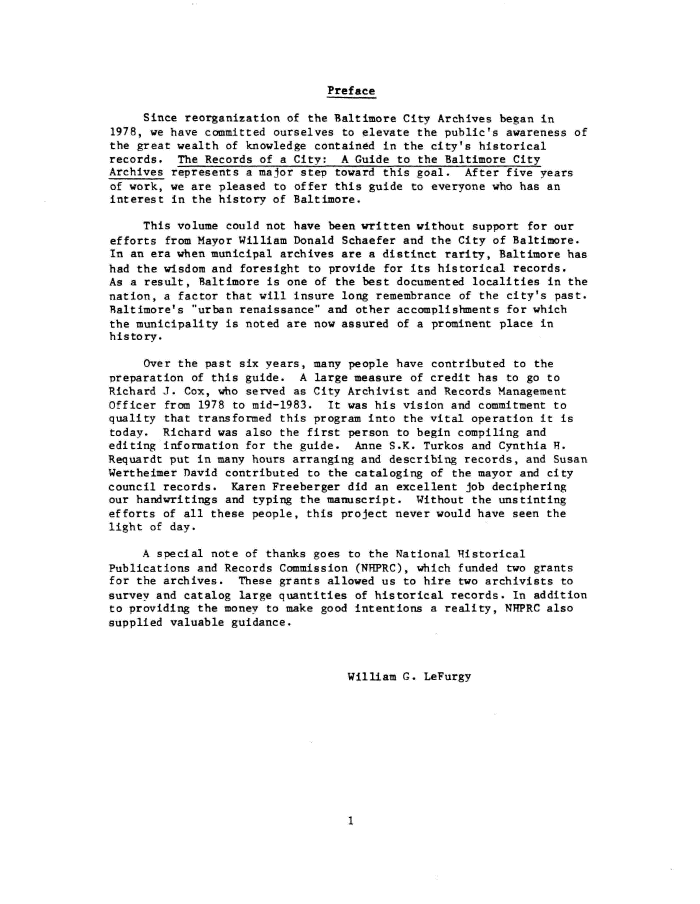|
Preface
Since reorganization of the Baltimore City Archives began in
1978, we have committed ourselves to elevate the public's awareness of
the great wealth of knowledge contained in the city's historical
records. The Records of a City; A Guide to the Baltimore City
Archives represents a major step toward this goal. After five years
of work, we are pleased to offer this guide to everyone who has an
interest in the history of Baltimore.
This volume could not have been written without support for our
efforts from Mayor William Donald Schaefer and the City of Baltimore.
In an era when municipal archives are a distinct rarity, Baltimore has
had the wisdom and foresight to provide for its historical records.
As a result, Baltimore is one of the best documented localities in the
nation, a factor that will insure long remembrance of the city's past.
Baltimore's "urban renaissance" and other accomplishments for which
the municipality is noted are now assured of a prominent place in
history.
Over the past six years, many people have contributed to the
preparation of this guide. A large measure of credit has to go to
Richard J. Cox, who served as City Archivist and Records Management
Officer from 1978 to mid-1983. It was his vision and commitment to
quality that transformed this program into the vital operation it is
today. Richard was also the first person to begin compiling and
editing information for the guide. Anne S.K. Turkos and Cynthia R.
Requardt put in many hours arranging and describing records, and Susan
Wertheimer David contributed to the cataloging of the mayor and city
council records. Karen Freeberger did an excellent job deciphering
our handwritings and typing the manuscript. Without the unstinting
efforts of all these people, this project never would have seen the
light of day.
A special note of thanks goes to the National Historical
Publications and Records Commission (NHPRC), which funded two grants
for the archives. These grants allowed us to hire two archivists to
survey and catalog large quantities of historical records. In addition
to providing the money to make good intentions a reality, NHPRC also
supplied valuable guidance.
William G. LeFurgy
|

